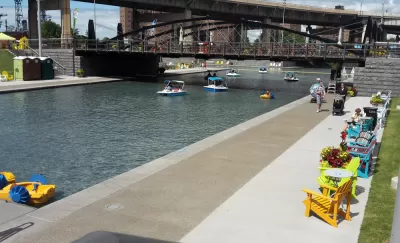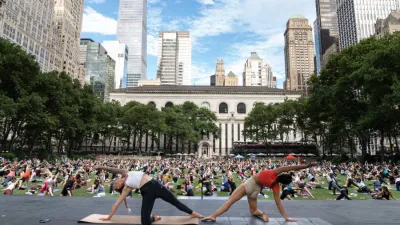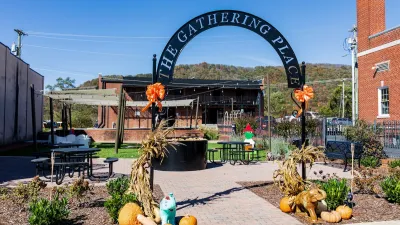New qualitative research into three example public spaces in the United States offers best practices and obstacles to avoid in the placemaking process.

Nate Storring, deputy director of Project for Public Spaces, writes for the Brookings Institution blog, The Avenue, to provide a list of "takeaways" generated by a recent qualitative study into the holistic effects of three public spaces in the United States.
The research in question is a recent entry in the Bass Center for Transformative Placemaking research series titled "Beyond traditional measures: Examining the holistic impacts of public space investments in three cities." Researchers Hanna Love and Cailean Kok qualitatively examined public spaces in Flint, Mich., Buffalo, N.Y., and Albuquerque, N.M. "to shed new light on these questions and chart a path forward for more equitable and effective placemaking," explains Storring.
Storring focuses on four main takeways from the research, with more detail included in the source article below:
- Public space for 'everyone' don't work for everyone.
- Placemaking needs thoughtful place governance to sustain itself
- When it comes to money, 'how' sometimes matters more than 'how much'
- The future of public spaces is qualitative
On this last point, Storring notes that the groundbreaking observational research techniques pioneered by William H. Whyte and Jan Gehl "to track the number and kinds of people in a space and how they use it" offer a baseline of research that nevertheless fails to capture key issues, such as public perception, interpersonal interactions, and broader benefits to public health, the economy, and the environment. "Since then, academic research on public spaces has continued to evolve, with a growing emphasis on qualitative techniques," according to Storring.
FULL STORY: Four takeaways on public space investment for placemakers

Study: Maui’s Plan to Convert Vacation Rentals to Long-Term Housing Could Cause Nearly $1 Billion Economic Loss
The plan would reduce visitor accommodation by 25,% resulting in 1,900 jobs lost.

North Texas Transit Leaders Tout Benefits of TOD for Growing Region
At a summit focused on transit-oriented development, policymakers discussed how North Texas’ expanded light rail system can serve as a tool for economic growth.

Why Should We Subsidize Public Transportation?
Many public transit agencies face financial stress due to rising costs, declining fare revenue, and declining subsidies. Transit advocates must provide a strong business case for increasing public transit funding.

How to Make US Trains Faster
Changes to boarding platforms and a switch to electric trains could improve U.S. passenger rail service without the added cost of high-speed rail.

Columbia’s Revitalized ‘Loop’ Is a Hub for Local Entrepreneurs
A focus on small businesses is helping a commercial corridor in Columbia, Missouri thrive.

Invasive Insect Threatens Minnesota’s Ash Forests
The Emerald Ash Borer is a rapidly spreading invasive pest threatening Minnesota’s ash trees, and homeowners are encouraged to plant diverse replacement species, avoid moving ash firewood, and monitor for signs of infestation.
Urban Design for Planners 1: Software Tools
This six-course series explores essential urban design concepts using open source software and equips planners with the tools they need to participate fully in the urban design process.
Planning for Universal Design
Learn the tools for implementing Universal Design in planning regulations.
City of Santa Clarita
Ascent Environmental
Institute for Housing and Urban Development Studies (IHS)
City of Grandview
Harvard GSD Executive Education
Toledo-Lucas County Plan Commissions
Salt Lake City
NYU Wagner Graduate School of Public Service





























